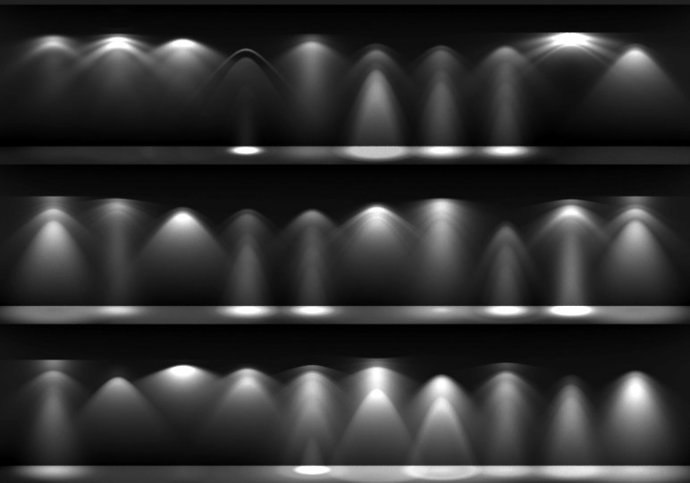
There’s been an add-on available for quite some time that allows IES light profiles to be used in Cycles, but recently Lukas Stockner (the guy who brought you portal lamps) has been working on a patch that implements IES profiles natively (without requiring an add-on), which potentially means faster renders and more accurate results.
See D1543:
This patch adds support for IES files, a file format that is commonly used to store the directional intensity distribution of light sources.
[…]
The new “IES Light” node is supposed to be plugged into the Strength input of the Emission node of the lamp.The user interface of the node is similar to the script node, the user can either select an internal Text or load a file. […]
The local coordinate system of the lamp is used, so that the direction of the light can be changed. For UI reasons, it’s usually best to add an area light,
rotate it and then change its type, since especially the point light does not immediately show its local coordinate system in the viewport.
For now you’ll have to wait for the patch to be approved and added into master before you can try it out, unless you’re capable of applying the patch and building blender locally (which I failed at miserably).
Interesting. I’m so not as “technically minded” as you are, but this looks very promising. I’ve been reading about it on the link you provided… as I understand it these IES things are a file format secifically for realisitc light setups, which you can then download/create and use in your scene or in multiple scenes. Similar to the way we use HDRi images? Anyway, It also says it’s and industry standard format. That in itself is a good reason why it would be nice to have access to this.
I’ve never actually used them myself, but I think you’re describing them right. They seem super helpful for archviz stuffs and I remember lots of people demanding support for them before the add-on showed up.
Yeah, your description is very close. In basic terms, they are “special lamps” you can import that distribute the light according to a defined pattern. For example, in cycles the point lamp distributes evenly, but the spot light sends light down in a cone. These lamps work in a similar way, but with a more complicated and detailed distribution pattern (the images above simply show the lights up against a wall, demonstrating their distribution. :)
That looks awesome! This is a small detail I’ve never really thought of, but one that can make a huge difference. Most car headlights I’ve seen have that wavering in light strength which would add a lot to a render.
Thanks for sharing!
Ahhh, finally. Thanks for the early info, @gregzaal:disqus.
Cool! I’ve been using the IES addon for a few months now. :)
That is great. Lot’s of stuff could be blender native. Same image effects, some nodes, etc
That is great. Lot’s of stuff could be blender native. Same image effects, some nodes, etc